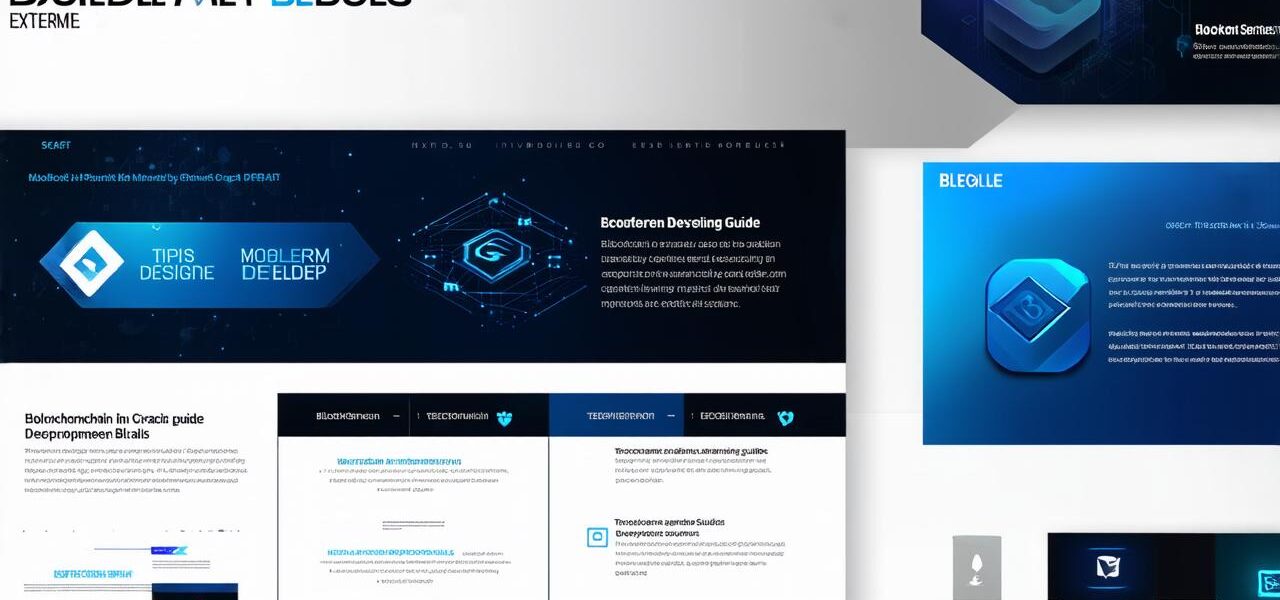
Essential Guide to Blockchain Development: Key Strategies and Tools
Blockchain technology has been gaining popularity in recent years due to its decentralized and secure nature. It allows for a distributed ledger that can record transactions without the need for intermediaries, making it an attractive solution for industries such as finance and healthcare.
Key Strategies for Blockchain Development
1. Define the problem you are trying to solve
Before starting your blockchain project, it’s important to define the problem you are trying to solve. This will help you determine which features and functionalities are necessary for your blockchain.
2. Choose the right consensus mechanism
The consensus mechanism is the algorithm used to validate transactions and maintain a consistent ledger in your blockchain. There are several types of consensus mechanisms, including proof-of-work (PoW), proof-of-stake (PoS), and delegated proof-of-stake (DPoS). Each has its own advantages and disadvantages, so it’s important to choose the right one for your blockchain.
3. Build a scalable infrastructure
As your blockchain grows, you will need to build a scalable infrastructure that can handle increased transaction volumes and network congestion. This may include using sharding techniques to distribute data across multiple nodes, implementing off-chain solutions for certain tasks, and optimizing the code and architecture of your blockchain.
4. Ensure security and privacy
Security and privacy are critical considerations for any blockchain project. You will need to implement measures such as encryption, access controls, and auditing to protect your data and prevent unauthorized access or tampering. Additionally, you should comply with relevant regulations and standards, such as GDPR and ISO 27001, to ensure the integrity and trustworthiness of your blockchain.
Key Tools for Blockchain Development
1. Blockchain development platforms
There are several blockchain development platforms available that provide tools and resources for building and deploying blockchains. Some popular options include Ethereum, Hyperledger Fabric, and Corda. These platforms offer features such as smart contract development, consensus mechanism implementation, and node management, making it easier to build a blockchain from scratch.
2. Blockchain frameworks
Blockchain frameworks are pre-built solutions that provide a higher level of abstraction and simplify the development process. They offer pre-implemented features and functionalities that can be customized and extended as needed. Some popular blockchain frameworks include Truffle, Remix, and Ganache.
3. Blockchain testing tools
Testing is an essential part of the blockchain development process, as it ensures the integrity and functionality of your blockchain. There are several blockchain testing tools available that can help you automate and streamline the testing process. Some popular options include Ganache, Truffle, and Remix.
4. Blockchain analytics and monitoring tools
Blockchain analytics and monitoring tools provide insights into the performance and activity of your blockchain, allowing you to identify issues and optimize your infrastructure. Some popular options include Infura, Alchemy, and Chainalysis.
Case Studies in Blockchain Development
1. Bitcoin
Bitcoin is perhaps the most well-known example of a blockchain project that has successfully scaled to meet the demands of its users. Bitcoin was designed as a decentralized digital currency that could be used for peer-to-peer transactions without the need for intermediaries. It uses a proof-of-work consensus mechanism and has a scalable infrastructure that can handle increased transaction volumes.
2. Ethereum
Ethereum is a blockchain platform that allows developers to build decentralized applications (dApps) using smart contracts. It uses a proof-of-stake consensus mechanism and has a large community of developers who contribute to its development and maintenance. Some popular dApps built on Ethereum include Decentraland, CryptoKitties, and Balanc3.
3. IBM Food Trust
IBM Food Trust is a blockchain-based supply chain management system that allows food manufacturers, retailers, and regulators to track and verify the origin and quality of food products. It uses a permissioned consensus mechanism and has been implemented by several major food companies, including Walmart and Nestle.
Personal Experience in Blockchain Development
As a blockchain developer with several years of experience, I have seen firsthand the challenges and opportunities that come with building a blockchain. One of the most important lessons I’ve learned is the importance of defining the problem you are trying to solve before starting your project. This will help you identify the features and functionalities that are necessary for your blockchain and ensure that it meets the needs of your users.
Another key aspect of blockchain development is building a scalable infrastructure that can handle increased transaction volumes and network congestion. This may involve using sharding techniques, implementing off-chain solutions, or optimizing the code and architecture of your blockchain.
Finally, security and privacy are critical considerations for any blockchain project. You will need to implement measures such as encryption, access controls, and auditing to protect your data and prevent unauthorized access or tampering. Additionally, you should comply with relevant regulations and standards to ensure the integrity and trustworthiness of your blockchain.
FAQs
What is a blockchain?
A blockchain is a decentralized and secure ledger that records transactions without the need for intermediaries. It allows for a distributed ledger that can be verified by anyone on the network, making it an attractive solution for industries such as finance and healthcare.
How does a consensus mechanism work?
A consensus mechanism is the algorithm used to validate transactions and maintain a consistent ledger in your blockchain. There are several types of consensus mechanisms, including proof-of-work (PoW), proof-of-stake (PoS), and delegated proof-of-stake (DPoS). Each has its own advantages and disadvantages, so it’s important to choose the right one for your blockchain.

What is a smart contract?
A smart contract is a self-executing program that can automate certain processes on a blockchain. It allows you to define rules and conditions that are executed automatically when certain events occur, such as the transfer of assets or the issuance of certificates. Smart contracts provide a secure and transparent way to automate certain tasks on a blockchain, making them an attractive solution for industries such as finance and supply chain management.



